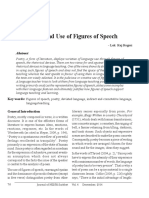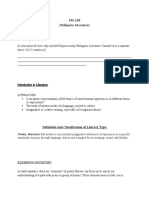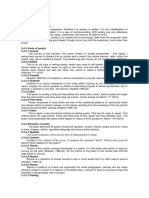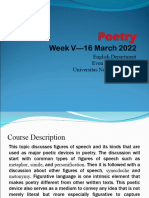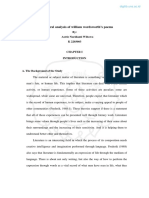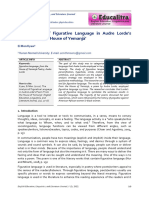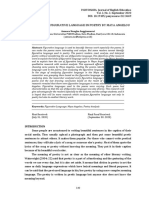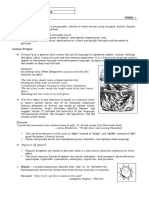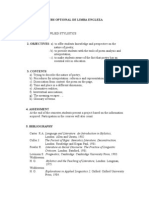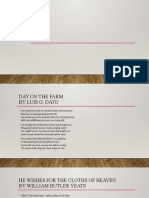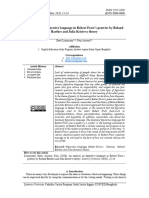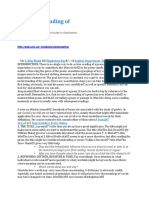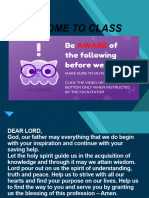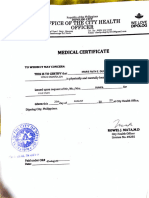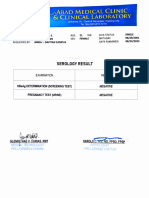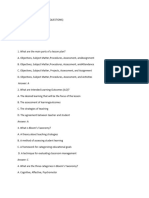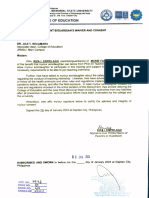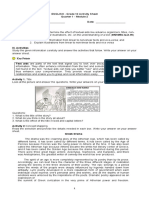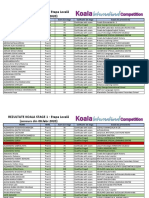0% found this document useful (0 votes)
255 views22 pagesAction Research
The document discusses an action research study that assessed students' competency in understanding figurative language in lyric poetry. The study provided a 5-week intervention where students read and analyzed lyric poems. They learned to identify common figurative devices like similes, metaphors, and personification. Testing before and after the intervention showed that students greatly improved in recognizing these devices and appreciating words with figurative meanings. The research concluded that reading and discussing lyric poetry helped students strengthen their ability to interpret figurative speech.
Uploaded by
Marie Faith DumpaCopyright
© © All Rights Reserved
We take content rights seriously. If you suspect this is your content, claim it here.
Available Formats
Download as DOCX, PDF, TXT or read online on Scribd
0% found this document useful (0 votes)
255 views22 pagesAction Research
The document discusses an action research study that assessed students' competency in understanding figurative language in lyric poetry. The study provided a 5-week intervention where students read and analyzed lyric poems. They learned to identify common figurative devices like similes, metaphors, and personification. Testing before and after the intervention showed that students greatly improved in recognizing these devices and appreciating words with figurative meanings. The research concluded that reading and discussing lyric poetry helped students strengthen their ability to interpret figurative speech.
Uploaded by
Marie Faith DumpaCopyright
© © All Rights Reserved
We take content rights seriously. If you suspect this is your content, claim it here.
Available Formats
Download as DOCX, PDF, TXT or read online on Scribd
/ 22

